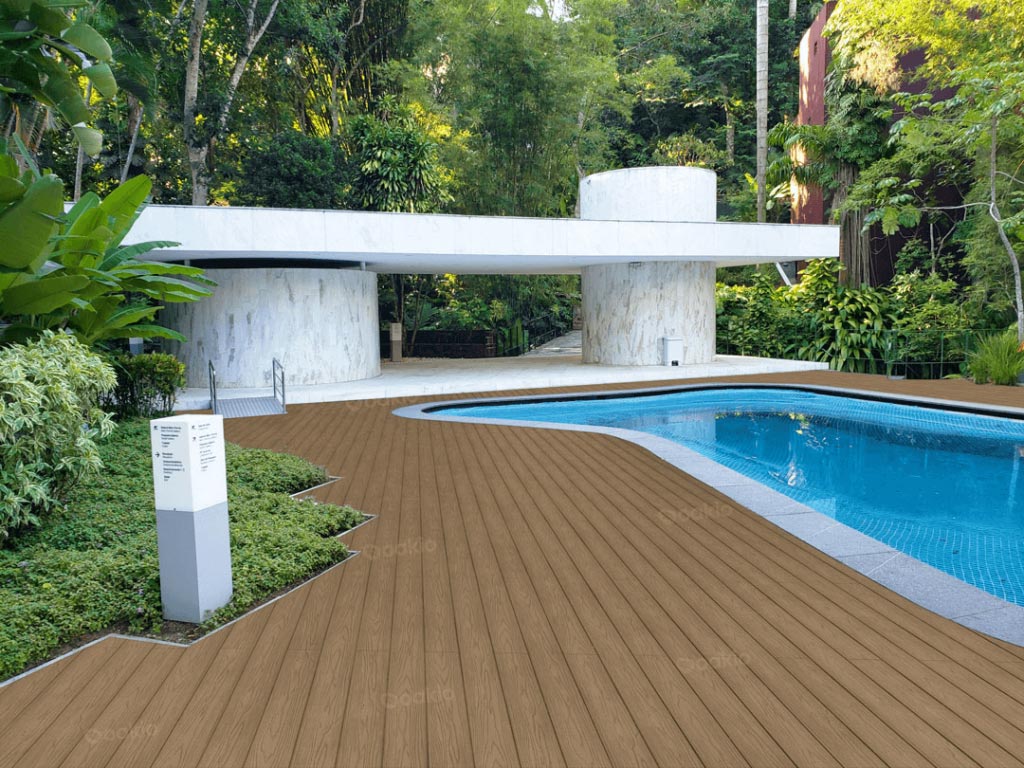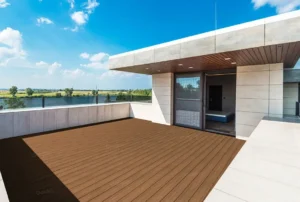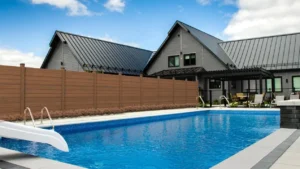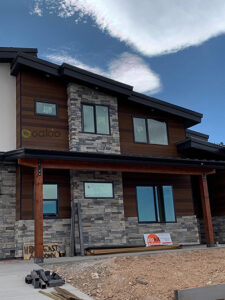Composite Deck Boards vs. Ceramic Tiles Insights: Home Renovation Guide 2024
Embarking on home renovation involves critical decisions, particularly in selecting materials that blend aesthetics with functionality. Key among these are composite deck boards and ceramic tiles. Both composite deck boards and ceramic tiles are popular materials for home renovation and both offer unique advantages for your living spaces.
When your house needs to be renovated, many places need to be inspected and decided by yourself. In the decoration process, it’s common to be unfamiliar with composite decking and ceramic tile flooring.
Are composite decking boards any good? What are the problems with composite decking?What are the advantages and disadvantages of ceramic tiles? You might think of these questions when choosing between composite decking and ceramic tile flooring, as selecting the right materials is crucial for both aesthetics and functionality when renovating your home. This article aims to explore the distinct characteristics, pros and cons of composite deck boards and ceramic tiles, providing you with the necessary insights to make wise decisions during your renovation process, whether you’re revamping a specific area or undertaking a complete overhaul of your home.
What are Composite Deck Boards and Ceramic Tiles?
Composite Deck Boards:
Composite deck boards, namely composite deck planks, are a modern construction material made from a mixture of wood fibers and recycled plastics. This combination creates a sturdy, composite material used primarily for outdoor decking. These composite decking boards are designed to resemble the appearance of natural wood while incorporating the resilience and longevity of synthetic materials.
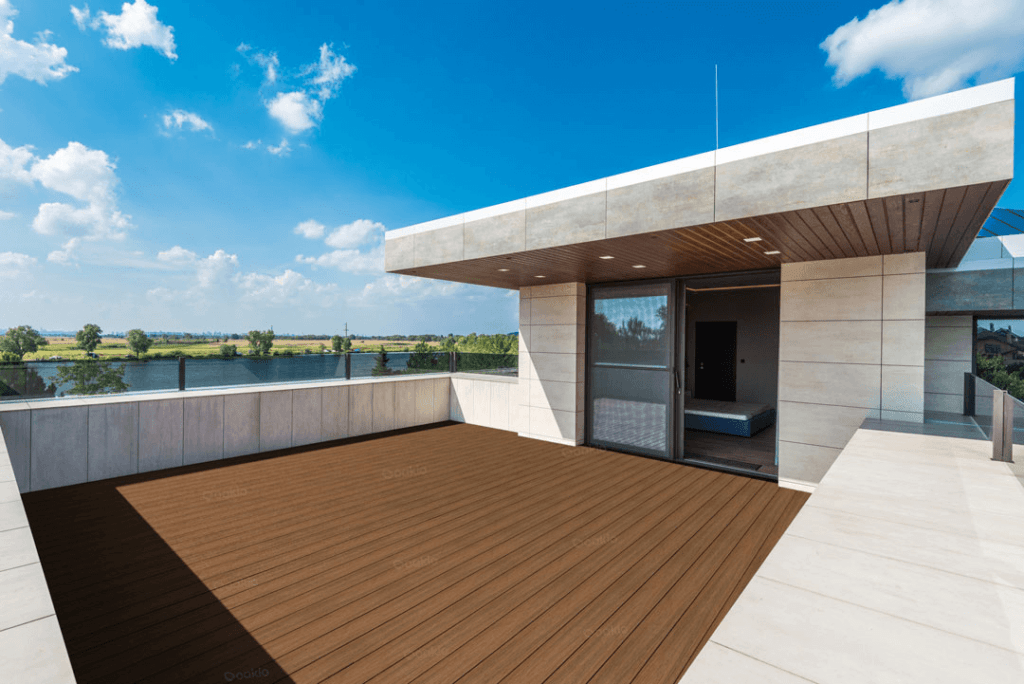
Ceramic Tiles:
Ceramic tiles are made from natural clay that is shaped, glazed, and then fired in a kiln. They are a common choice for flooring and wall coverings in various settings due to their hard, dense nature.
Ceramic tiles can be utilized in a variety of areas throughout the house, such as floors, kitchens, walls, bathrooms, and other high-traffic areas due to their durability and timeless aesthetic.
Pros and Cons of Composite Deck Boards
Composite decking has emerged as a popular choice for homeowners seeking a blend of aesthetic appeal and functionality in their spaces. This discussion on the pros and cons of composite deck boards aims to provide a comprehensive understanding of their advantages and disadvantages of composite decking.
Advantages of Composite Deck Boards:
There are numerous crucial decisions that must be made during a home renovation, most notably concerning the selection of composite decking materials. In order to be of assistance, we shall firstly examine advantages of composite decking boards.
- Slip-resistant
Composite decking is the perfect solution to the danger of slipping. You don’t have to worry that anyone might slip, as most composite deck boards are slip-resistant. This is one of the foremost reasons homeowners opt for composite decking boards. The impressive anti-slip composite deck boards are quite safe for everyone. Thanks to their embossed surfaces, these composite deck planks offer increased traction, ensuring a safer, slip-resistant deck area.
- Extremely Durable
The durability of composite deck boards is yet another fantastic characteristic. The composite deck boards are made to endure all types of weather conditions, such as intense sunlight, persistent rain, and even snow. Crafted from a mix of natural materials, composite decking boards are not only tough and solid against wear and tear but also aesthetically pleasing.
- Low Maintenance
One of the most popular features of composite deck boards is their low maintenance. A simple wipe with a cloth, dry or damp, is enough to keep these composite deck boards looking new. This means that you can spend less time maintaining it. Additionally, their surface layers are designed to resist wear, compression, impact, fire, flame, and chemical pollutants, making them a practical choice for long-term use.
Disadvantages of Composite Deck Boards
- Risk of Deformation
Without regular maintenance, composite deck boards can warp or deform. Over time, this can lead to visible cracks and an overall reduction in aesthetic appeal.
- Health Hazards of Low-Quality Boards
Some cheaper variants of composite decking boards and composite deck planks may contain high levels of formaldehyde in the glues used, posing health risks to users.
- Limited Repairability
These composite deck boards or composite deck planks can suffer irreversible damage if exposed to excessive water or severe scratches, making them challenging to repair.
Pros and Cons of Ceramic Tiles
After discussing the pros and cons of composite decking boards, it’s important to have a look at the pros and cons of ceramic tiles, so as to provide a balanced point of view for readers to weigh the advantages and disadvantages of composite decking and pros and cons of ceramic tile flooring.
Advantages of Ceramic Tiles: What Features Make Ceramic Tile A Healthy Choice?
- Versatility and Eco-Friendliness
Ceramic tiles are celebrated for their fireproof and waterproof qualities. Their ease of cleaning and maintenance, coupled with their environmental friendliness, makes them an attractive option for modern homes. Available in a myriad of sizes and colors, they suit a wide range of design preferences.
- Ideal for Cold Climates
With excellent thermal conductivity, ceramic tiles are perfect for homes with floor heating systems. They facilitate quick heating of rooms in colder regions, ensuring a warm and cozy indoor environment during winters.
- Hygiene and Longevity
Resistant to dirt and free from air pollutants, ceramic tiles offer a hygienic surface that is easy to clean and maintain. Their durability is noteworthy, with a lifespan that can extend up to 20 years, ensuring long-term value.
Disadvantages of Ceramic Tiles: What Are the Disadvantages of Ceramic Tile?
- Slip Hazard When Wet
Despite their many benefits, ceramic tiles can be quite slippery when wet. This makes them a less suitable option in households with elderly members or children.
- Discomfort in Cold Conditions
The hard texture of ceramic tiles can be uncomfortable, especially in winter months, for those who prefer walking barefoot.
In sum, both composite deck boards and ceramic tiles come with their unique set of advantages and disadvantages. For the composite decking that combines safety, durability, and ease of maintenance, composite deck boards are an excellent choice. On the other hand, ceramic tiles offer versatility, eco-friendliness, and are ideal for heated floors, especially in colder climates. When choosing materials for your home renovation, consider these factors to ensure that your selection not only enhances the beauty of your home but also aligns with your lifestyle needs and preferences.
Conclusion
In conclusion, the choice between composite deck boards and ceramic tiles for home renovation hinges on various factors, including the specific needs of your space, aesthetic preferences, and maintenance considerations. Composite deck boards and composite deck planks offer a blend of natural beauty and enhanced durability, making them suitable for living spaces that require resilience against the elements. Ceramic tiles, with their diverse designs and robust nature, are ideal for areas that demand easy maintenance and longevity.
For those considering composite decking, Oakio decking products present a noteworthy option. Oakio’s range of composite decking combines innovation, eco-friendliness, and aesthetic appeal. Their products are crafted from a blend of recycled wood fibers and plastics, offering a sustainable and durable decking solution. Oakio decking is designed to resist fading, staining, and scratching, ensuring a long-lasting and visually appealing space. With a variety of colors and styles available, Oakio decking products cater to diverse design preferences, allowing homeowners to create the perfect retreat.
Ultimately, whether you choose composite deck boards or ceramic tiles, both materials can significantly enhance the functionality and appearance of your home. By understanding the unique attributes of each, you can make a well-informed decision that aligns with your renovation goals and lifestyle needs.
Trending Reading
What Are the Differences Between the WPC Board and PVC Board?
[2024 Update] How Long Does WPC Decking Last?
